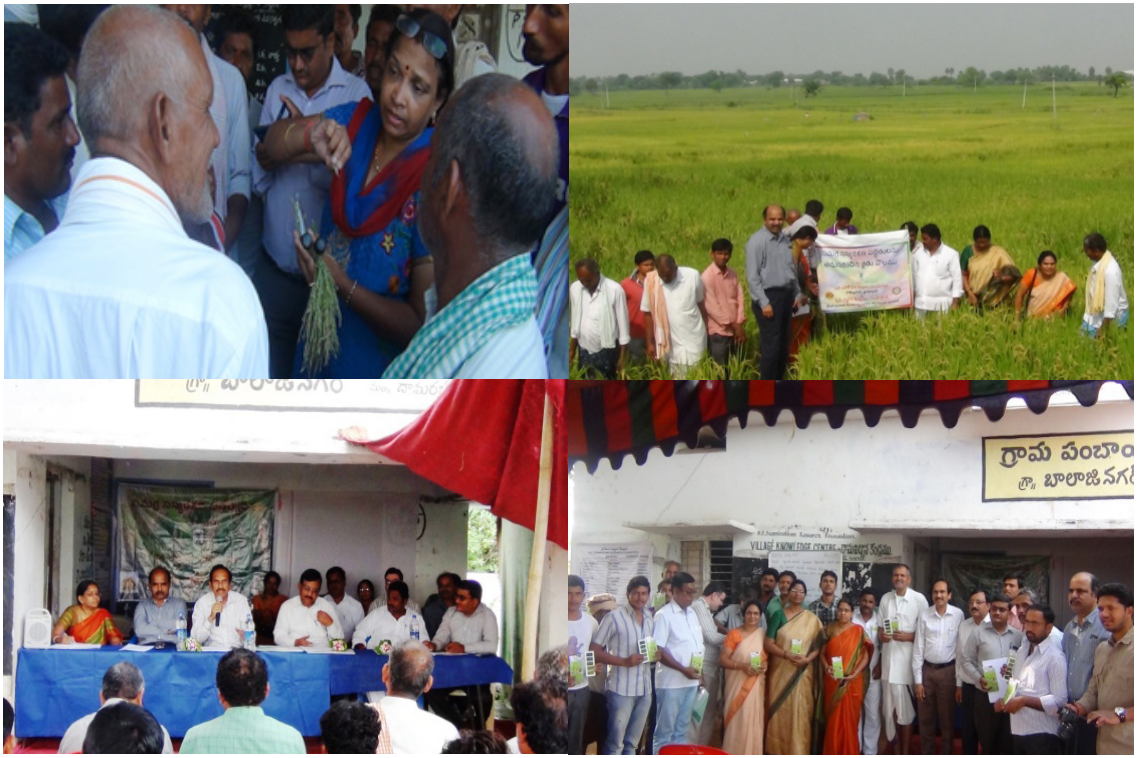Technology 17: Participatory IPM in Rice
Technology Profile
Participatory IPM technology involves management of pests (including insects, diseases and weeds) in a holistic way in farmers’ rice fields involving them in a participatory way and allowing them to select IPM practices from a basket of options available. Knowledge and information are keys to correct pest management decisions. IPM implementation involves certain skills and knowledge that help in identification of pest and also their susceptible stages for effective management. As IPM involves a number of components, farmers must have capability of taking decisions and selecting IPM options accordingly for economical and long term management. Most of these options also need to be refined at individual farm level keeping in view the availability and feasibility of farmers. Therefore, IPM involves working with the farmers in their fields and devising/refining technologies suitable to their conditions.
Context
Need: Biotic constraints especially insect pests, weeds and diseases are key constraints of rice productivity in India with estimated avoidable crop losses of 26.3 Mt with a value of Rs. 9465 crores. Keeping this in view, it is very important to devise and adopt eco-friendly pest management practices.
Existing practices: Most popular rice varieties grown include BPT 5204, Swarna, MTU 1010 and MTU 1001 which are highly susceptible to these pests. Farmers are completely dependent on toxic pesticides for their management. Indiscriminate use of insecticides including synthetic pyrethroids and combination products was the main reason for heavy incidence of majority of insect pests like BPH, leaf folder. Farmers were taking up 8 to 10 sprays in a season and most of the times repeating the same insecticide.
Area: All the major rice growing districts in both the States which includes Nalgonda, Karimnagar, Khammam, Warangal districts in Telangana State, East and West Godavari, Guntur, Krishna districts in Andhra Pradesh State.
Empirical Evidences
Field testing results: Preliminary IPM trials were conducted in 2 farmer’s fields in Chillapuram (Mr. Saida Naik) and Thungapadu (Mr. Chenna Reddy) villages of Miryalguda mandal in Nalgonda district during 2012 and in 3 farmer’s fields in Annarao camp (Sri Satish), Chillapuram (Sri Nagu Naik) and Kampasagar (Sri Janardhan) during 2013. During Kharif 2014, participatory IPM program was conducted in 3 thandas viz., Balajinagar thanda, Badya thanda and Nimya thanda of Damarcherla mandal, Nalgonda district of Telangana State covering 25 hectares. Major pests observed were brown planthopper (BPH), leaf folder, leaf mite, panicle mite, blast, false smut, sheath rot and grain discolouration. Grassy weeds were predominant followed by broad leaved weeds and sedges. BPH incidence was observed from 45 DAT and exceeded ETL at 100 DAT with more than 50 hoppers per hill in farmers’ practices (Table.1). Leaf folder incidence was found high in IPM plot (21.25%) than farmer practices (16.50%). Sheath blight damage was observed low (< 5%) whereas false smut incidence was high at Annarao camp during 2013 at harvest stage. Weed population and weed biomass were significantly low in IPM plots, contributing to higher resource availability to rice crop. Grain yield was high in IPM resulting in high returns and high BC ratio (4.85) as against farmers’ practices (2.44). The study created awareness among farmers about pests, symptoms of damage and natural enemies along with the stages observed in the field for easy identification. The study reduced the indiscriminate use of insecticides and about 80% farmers adopted alleyways for the management of planthoppers.
IPM activities taken up in farmers’ fields

Practical Utility/ Scalability
IPM technology has the potential to realistically demonstrate the impact on the livelihood of farmers. There is scope for significant change in knowledge levels of the farmers after exposure to on-farm trials and frequent interaction of the farmers with scientists through the participatory approach. Since it involves exposure to improved crop management techniques, opportunity to visit rice research stations and farmers training programmes, participation in field days, rice IPM can be made more farmers friendly. The increase in awareness among the farmers, adoption of environment friendly and non pesticidal components as part of rice IPM can significantly help in reducing pesticide use in farmers’ fields resulting in reduced cost of cultivation with improved management of biotic stresses, environmental benefits to their families and safety to human health. As we have the experience of doing on-farm activities, it is possible to scale up the activity with the active involvement of various stakeholders viz., IIRR scientists, State Agricultural Universities scientists, State agriculture department officials, KVK staff, farmer organisations, input dealers and other related NGOs.